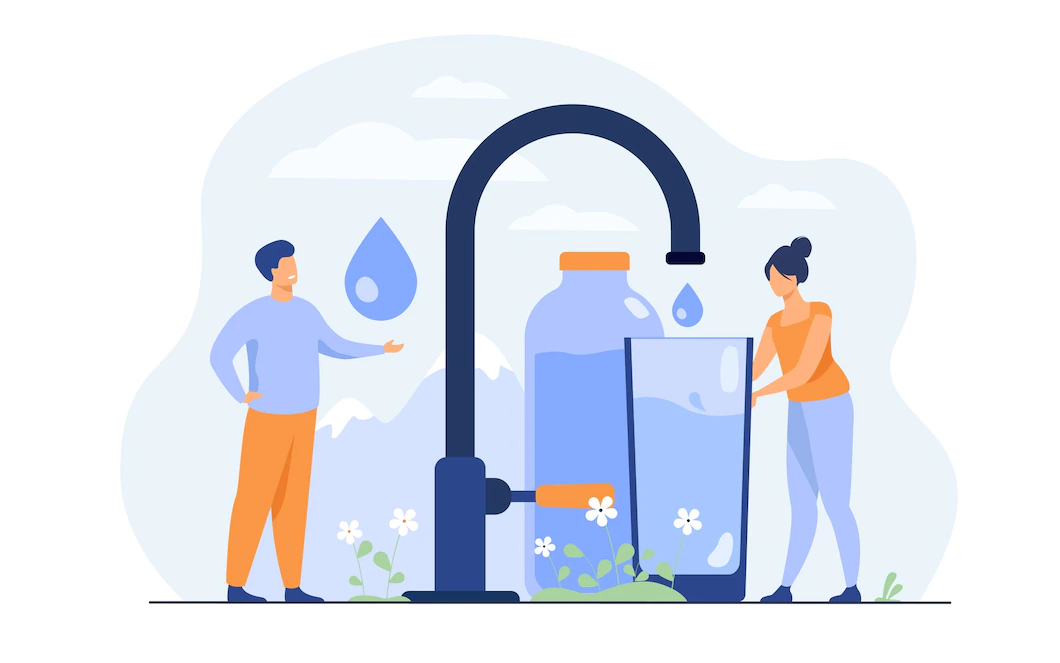Applicable ways to prevent water supply from being scarce
- 1 How does the drinking water supply work?
- 1.1 The water sources are the following:
- 1.2 What procedure makes it possible for you to have water in your home?
- 1.3 The water purification system
- 1.4 Why is there a need to treat the water?
- 1.5 How is the water made drinkable?
- 1.6 Making adequate use of available water resources
- 1.7 Looking for solutions to save water
- 1.8 Water supply: inequality in access
- 1.8.1 Conclusion
- 1.8.2 Author Bio
Water supply is the system that allows drinking water to be delivered to the homes of the population.
Have you ever wondered how water can determine the daily life of people and families in the world? Here, in this post, discover the importance of water.
Have you stopped to think about what would happen if no water came out of the taps in your house or if the water that emanates from them is not drinkable? Unfortunately, this is the portrait of the life of many people in the world, whose day-to-day is summed up in struggling to get water and survive.
That is why it is really important for you to know the importance of water supply and the problems caused by its scarcity. Maybe this way you will give it the value it really has?
How does the drinking water supply work?
The supply of drinking water involves the collection of water and its conduction to the point where it is consumed in suitable conditions. For water to be suitable for consumption, it not only has to meet sanitary requirements but also quality requirements.
The water sources are the following:
- The springs.
- Seawater that is desalinated.
- Surface water is that which comes from lakes, rivers, and reservoirs.
What procedure makes it possible for you to have water in your home?
- Various methods are used to capture water, such as wells or reservoirs, among others.
- Once the water has been stored, it is time to make it drinkable, for which treatment will be necessary that will depend on the initial quality of the water.
- When the water has been treated, it is usually stored in tanks so that it can be distributed through the distribution network, which is usually made up of pumping stations, main and secondary pipes, and valves.
The water purification system
A water supply network is meaningless without drinking water. Drinking water is present in daily tasks because it is essential in cooking, cleaning, and personal hygiene. Water purifiers are necessary to get clean drinking water today. Water purification systems remove impurities, chemicals, and heavy metals in the water that can be harmful to you and your family. Use the Best Quality water purifier at home to ensure clean drinking water. There are several RO service centers that provide RO repair services including maintenance service, installation service at your doorstep. But do you really know what drinking water is?
The World Health Organisation (WHO) defines safe water as that which has microbial, chemical, and physical properties that meet its quality criteria, that is, its quality is safe for human consumption.
Why is there a need to treat the water?
For the water you consume in your home to be considered suitable, it cannot contain components whose quantity or density endangers your health. Have you ever considered the difference between water in its natural state and the one you consume? The difference is water pollution.
Numerous human activities generate waste (grey water from cities, pesticides from agriculture, slurry from livestock, etc.) that can filter into groundwater reserves such as aquifers. When the water comes into contact with these substances, it becomes contaminated, presenting elements that can be harmful to your health.
Surface water sources can also be influenced by pollution, such as discharges from industrial activity.
As a result, the water can be contaminated:
- Chemistry. If there are chemical substances such as those derived from anti-plague products or fertilizers, among others.
- Biological. If there are microorganisms such as bacteria or parasites.
How is the water made drinkable?
Once the water has been collected, it is treated. It is the system that will make it suitable for you to consume at home and be safe for your family’s health.
In this post on water purification methods, it is explained how generally purification programs are carried out to the environment (rural areas, urban areas, refugee camps, etc.). Take a look and find out how different access to water in the world can be between one person and another.
The water treatment process consists of various stages. In general, the mechanism would be as follows:
- Retention of large components (floating, bottom, or entrained) present in the water.
- Retention of suspended components of fine dimensions.
- Elimination of water turbidity. When the water is not clear and has colour, it is said to be cloudy. To suppress this opacity, it is subjected to flocculation. To do this, substances are added that make it easier for small elements to group together to form larger ones and can be separated.
- Water filtration. It is the process that allows eliminating the elements that cause its cloudy appearance.
- Water disinfection. It is the step that makes it possible for the pathogenic microorganisms present in the liquid to disappear, for which chlorine-containing compounds are normally used.
Making adequate use of available water resources
It is not possible to maintain the current dynamics of water when there is a shortage of water in other parts of the planet.
Resources must be used efficiently in all areas so that they are sustainable.
Looking for solutions to save water
There are alternatives that promote the sustainable use of water, such as the dry toilet, the effects of global warming, or any type of sustainable innovation.
There is still time to preserve the resources and guarantee fair access to them. It is time to become aware of the situation. Understand why it is necessary to change the water consumption model.
Water supply: inequality in access
Water supply is essential:
- For human consumption.
- Also for the cultivation of food and the manufacture of a large part of the consumed products.
Therefore, it is important to have a global vision to be aware of all the uses of water and how to contribute to caring for this scarce resource. Based on data 3 out of 10 people worldwide do not have access to safe or available water at home.
- 6 out of 10 people do not have safe sanitation.
- 361,000 children under the age of 5 die each year from diarrhea.
- Poor sanitation can affect the transmission of diseases such as cholera, dysentery, hepatitis A and typhoid fever.
- 263 million people have to spend more than 30 minutes on a trip to collect water.
- 300 million people do not have a basic sanitation service. In other words, these are people who share a toilet or latrine.
Conclusion
The intention here is to make you realize the importance of taking care of water. Understand the point that it is a limited resource. It’s time to take action and turn this reality around!
Author Bio
Sunil Trivedi is the Managing Director of Aqua Drink. With 15 years of experience in the water purification industry, Sunil and his team have been ensuring that his clients consume 100% potable water to lead a healthy life and keep water-borne diseases miles away.

















